These celestial targets never fail to delight on a clear, dark night.
Alas! Today’s hectic lifestyle, obsession with electronic gadgets, and the mantra that “bigger is better” have carried over into amateur astronomy. Witness the Messier Marathon, computer-controlled remote CCD-imaging telescopes, and observatory-sized, trailer-mounted Dobsonian reflectors. Casual, relaxing stargazing seems to be largely a thing of the past — something practiced by only a few purists. To me, stargazing should provide a relaxing interlude from the pressures and worries of everyday living rather than contributing to them.
I’ve been privileged to use some of the largest telescopes in the world, including a 30-inch Brashear refractor. While the views in giant scopes can certainly be awesome, my most enjoyable stargazing sessions have been with very small instruments. As an example, I’ll share some of the exciting celestial sights I continually enjoy on clear nights using a basic 3-inch achromatic spotting scope intended for nature study such as bird watching. It has a fixed magnification of 30× — no fiddling with eyepieces in the dark or deciding which to use. Its field of view is 100′. That may seem modest in this age of fast apochromatic refractors and wide-field 2-inch eyepieces, but it’s ample to frame many of the sky’s best vistas.
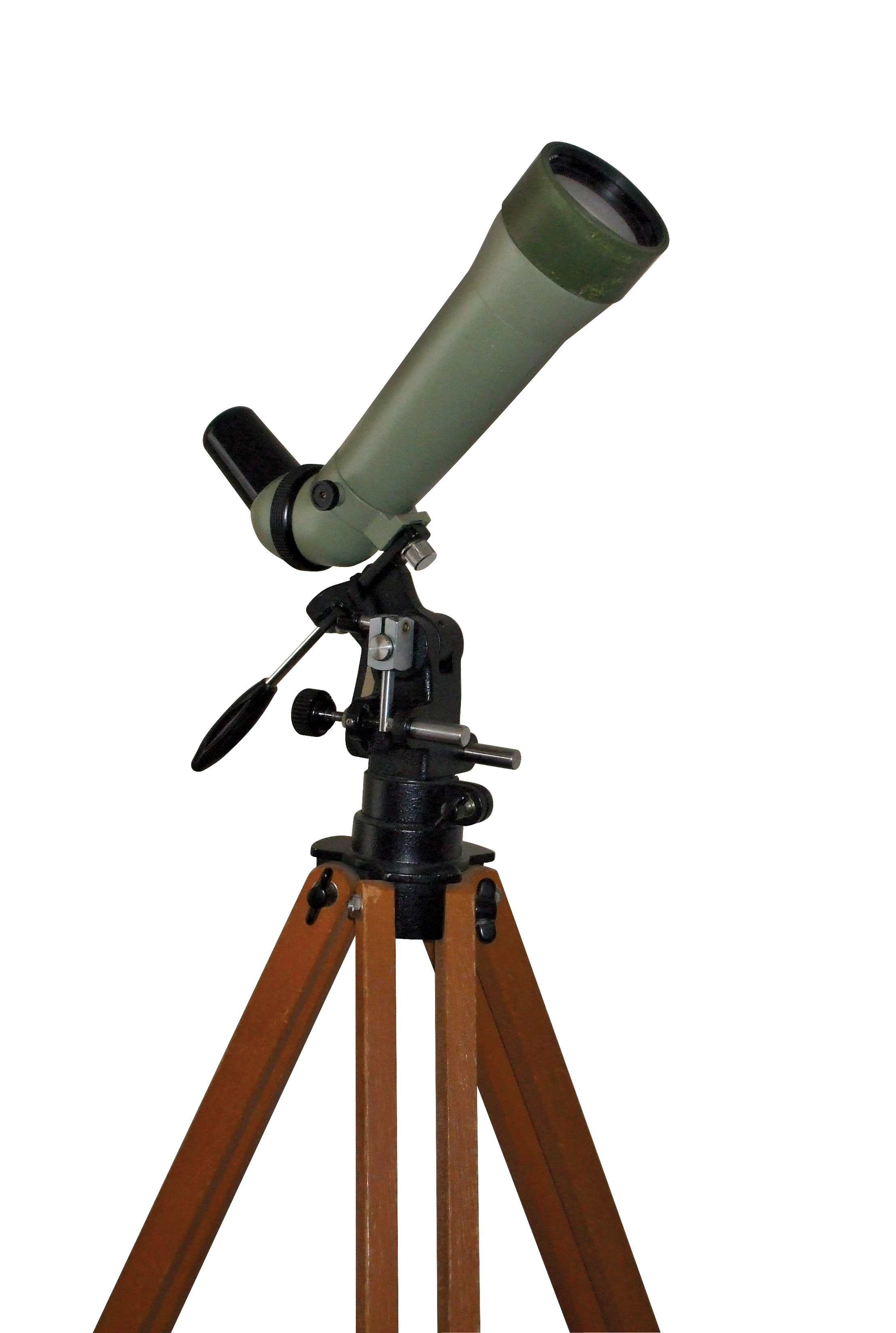
James Mullaney
With its simple tabletop alt-azimuth mount and a total weight less than five pounds, my spotting scope is always ready for instant use; no cool-down time needed! Being a refractor with an unobstructed light path, its images are razor sharp. And the views are virtually unaffected by poor atmospheric seeing due to the scope’s small aperture and low magnification. For more prolonged sessions, I also use it on a vintage Unitron alt-azimuth mount with slow-motion controls and a tripod with wooden legs, which are far superior to metal legs at damping vibrations.
This little glass has yet another virtue over big ones: it has a relatively limited number of targets. You might not consider this an advantage — but it is! I’m not tempted to find large numbers of objects every time I go out, eliminating the malady I refer to as “saturated stargazing.” Astronomy writer Michael Covington tells us that “All galaxies deserve to be stared at for a full 15 minutes.” I would extend this advice to every celestial object. I prefer to view at most a dozen of the sky’s wonders (including the Moon and planets) during the course of an evening in a relaxed and contemplative manner. To me, glancing at an object, then rushing on to another and another is like reading the CliffsNotes of the world’s great novels.
Here are some of the celestial sights that I enjoy most through the small spotting scope:
The Moon
Those who have ever only looked at our lovely satellite close up with high magnifications are surprised and delighted at its crystalline appearance at 30×. Lunar eclipses are at their absolute best at such a magnification, which bridges the gap between typical telescopic and binocular views. So too is earthshine, the “new Moon in the old Moon’s arms,” which seems more intense in this little scope than in bigger or smaller instruments.
For the ultimate thrill, I watch lunar occultations of other sky targets, especially planets or large star clusters such as the Hyades (see page 50). The Moon appears suspended in three-dimensional space as it glides across a cluster, covering and then uncovering individual stars, making its slow eastward orbital motion a joy to watch.
Planets
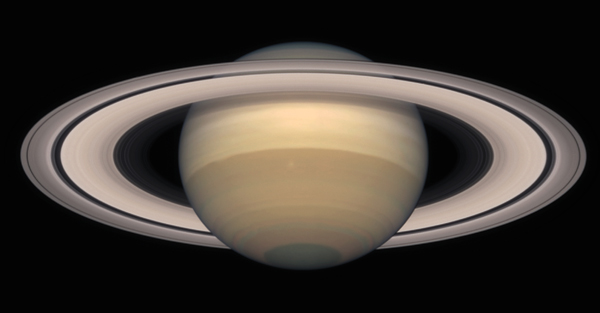
NASA / Hubble Heritage Team / STScI / AURA
Several of the planets look positively jewel-like magnified just 30 times! Venus when in its crescent phase a month or two before and after inferior conjunction is one example — a tiny, radiant silver sliver hanging in the sky. Jupiter has to be one of the grandest and most thrilling sights in the heavens.
The endless dance of the Galilean moons about the planet, continually changing position and configuration, never loses its fascination. Watching the satellites disappearing in front of or behind the planet’s disk, or passing in or out of its shadow, is like watching a celestial four-ring circus!
And then there’s Saturn, the supernal wonder of celestial wonders, the iconic image of astronomy, the most otherworldly object in the heavens. The spectacle of the rings hugging the planet, just barely resolved at 30×, looks too beautiful and ethereal to be real!
To find where the planets are in the sky tonight (or early tomorrow), use our interactive sky chart.
Comets
My little scope is ideal for viewing bright comets, its wide field typically taking in the entire object — nucleus, coma, and tail. It’s also superb for including other objects in the same view, which sometimes makes it possible to see the comet’s motion in a matter of minutes.
Double Stars
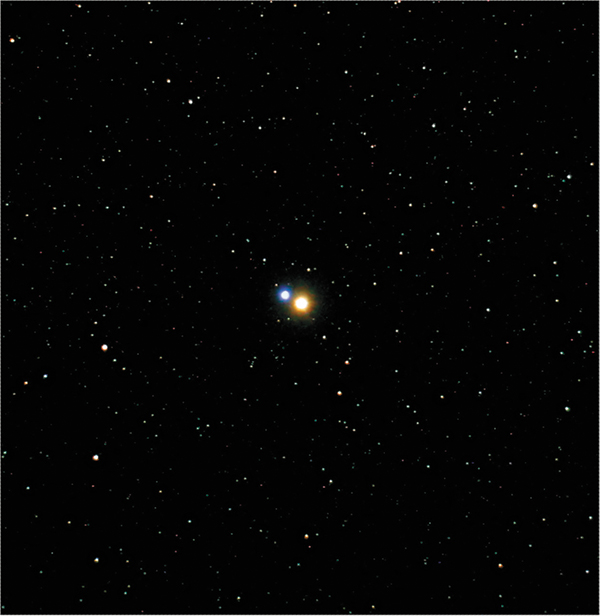
Johannes Schedler
My favorite deep-sky targets in the 3-inch glass are double and multiple stars. Literally thousands can be split even in such a small aperture. Many people’s favorite is magnificent Albireo (Beta Cygni). Its topaz-orange and sapphire-blue hues are magnificent, with the components separated just right at 30×.
But this jewel is basically a summer and fall target. A great substitute in late winter is h3945 in Canis Major. And moving into spring, there’s also Iota Cancri. I’ve christened them the Winter Albireo and Spring Albireo, respectively, and both of these clones are beautiful sights in the smallest of telescopes. Another favorite target is wide Mizar and Alcor at the bend of the Big Dipper’s handle, with Mizar itself neatly resolved into blue-white gems at 30×.
Most readers have viewed the stunning quadruple Theta1 Orionis — better known as the Trapezium — at the heart of the magnificent Orion Nebula. At 30×, the stars in this tight knot appear nearly in contact with one another!
At the other extreme, the sky contains many widely separated pairs that look like unrelated stars in a large telescope and appear to best effect in a small glass. One example is Omicron1 Cygni, the sky’s widest beautiful triple system. It displays striking contrasting hues of orange, white, and blue at low power, but the effect disappears as magnification increases and the components become unduly separated.
Star Clusters, Asterisms, and Associations
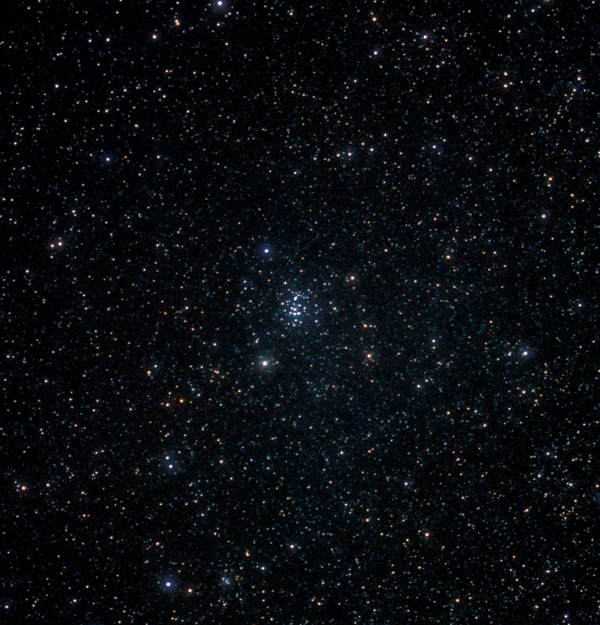
Akira Fujii
The magnificent Pleiades in Taurus and Beehive Cluster in Cancer are perfect matches for my little glass, filling its field of view. The grand Double Cluster in Perseus is a dual starburst against a rich Milky Way field.
Although globular clusters need larger scopes to appreciate their full magnificence, these fuzzy starballs look remote and mysterious at 30×. And some of the brighter ones, such as M13 in Hercules and M22 in Sagittarius, sparkle when viewed with averted vision.
Finally, there are truly expansive stellar groupings such as the Alpha Persei Association and big asterisms like the Coathanger (Collinder 399) in Vulpecula, both of which are amazing in a wide field at 30× or less.
Nebulae
Sure, everyone has seen the magnificent Orion Nebula before. But have you viewed the entire complex? In addition to M42 and M43, it includes the sparse open cluster NGC 1981 to the north and the two neighboring double stars Iota Orionis and Struve 747 just to the south — all of which can be seen in a single eyepiece view at 30× on the 3-inch. Again, most readers have seen the Lagoon Nebula (M8) and Trifid Nebula (M20) in Sagittarius — but have you seen them together in same eyepiece field, as I can in my spotting scope?
Diffuse nebulae aren’t the only nebulous attractions — we also have planetaries. Everyone’s favorite, the Ring Nebula (M57) in Lyra, looks like a tiny elliptical donut, with the central hole just visible using averted vision at 30×. Seeing it just barely resolved is quite thrilling! The Dumbbell Nebula (M27) in Vulpecula is much bigger and more obvious, looking like a little pillow floating among the rich Milky Way background. And a third type of nebulosity is represented by the Crab Nebula (M1) in Taurus. I can spy this supernova remnant easily in the 3-inch, and although it’s small at 30×, its elliptical shape is obvious.
Galaxies
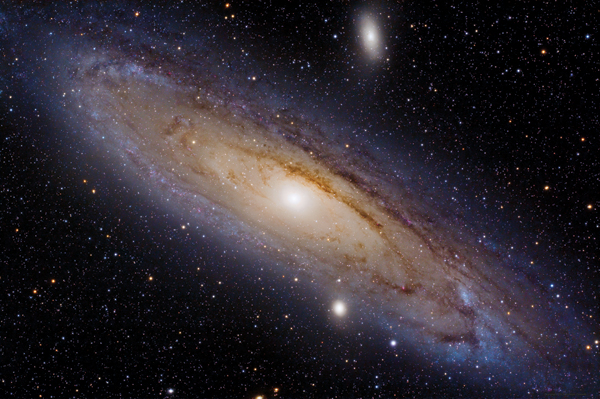
Lorenzo Comolli
This entire article could easily be devoted to the galaxies visible in a 3-inch glass. At the top of the list is the magnificent Andromeda Galaxy (M31) and its two dim companions, M32 and M110. Not only do all three fit in the same eyepiece, but the main galaxy itself extends far beyond my scope’s wide field of view in opposite directions. Sweeping back and forth across this wonder of the great beyond on a dark night is thrilling beyond words.
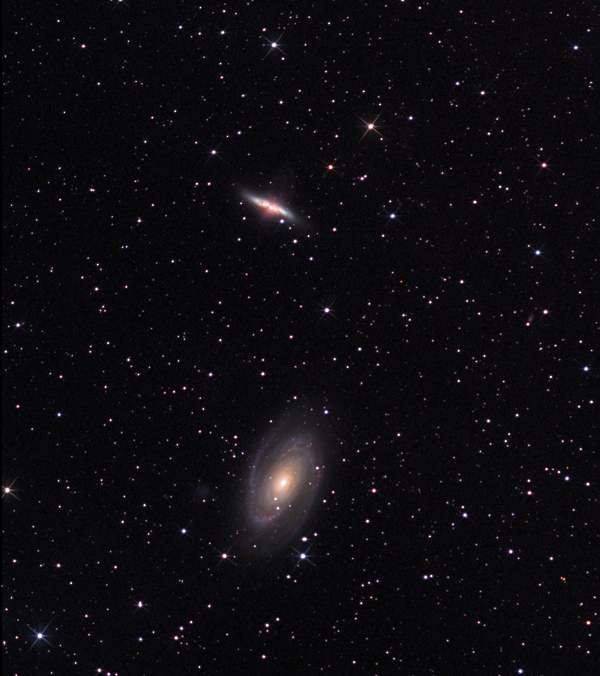
Adam Block / NOAO / AURA / NSF
Other favorites with my little glass are the Triangulum Galaxy (M33), Bode’s Galaxies (the M81/M82 pair) in Ursa Major, the Whirlpool (M51) in Canes Venatici, the Sombrero (M104) in Virgo, and the big Sculptor Galaxy (NGC 253). All of these island universes are alluring sights in the 3-inch and have a decidedly remote look to them at just 30× — unlike the close-up views at higher powers.
The Milky Way
Saving the best for last, the grandest object in the entire heavens is our own Milky Way Galaxy! Sweeping its massed star clouds at low power is an exhilarating experience — especially those of summer in Cygnus, Scutum, and Sagittarius. This is truly Downtown Milky Way! And while the winter Milky Way isn’t as rich and obvious in those months, it’s still a starry wonderland in constellations such as Cepheus, Cassiopeia, Perseus, Auriga, and Puppis.
Whatever part of this Great White Way of the heavens you choose to view, be alert to an amazing illusion — one that favors low-power, wide-field views, and is actually at its best in binoculars. As you stare into a particularly rich star cloud, note that the brighter stars appear closer to you than the fainter, more distant ones behind them. As the eye-brain combination makes this connection, a sensation of 3-dimensionality can occur, causing the Milky Way to jump right out of the sky at you!
It’s always been a rule of thumb in stargazing that the smaller the telescope, the more often it will be used. Part of that relates to weight and portability. But as the above discussion clearly demonstrates, there’s certainly more involved here than size alone!
This article first appeared in print in the April 2014 issue of Sky & Telescope.
 3
3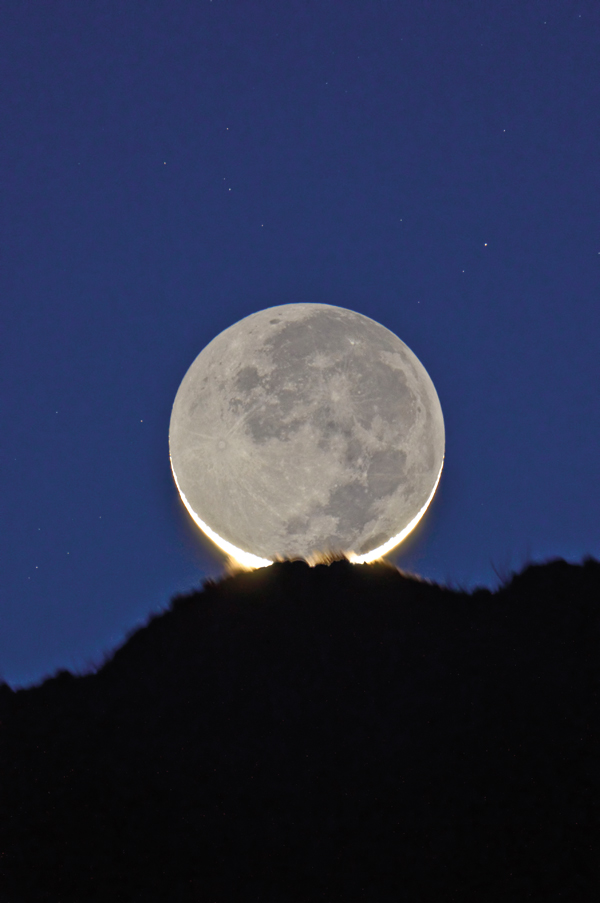
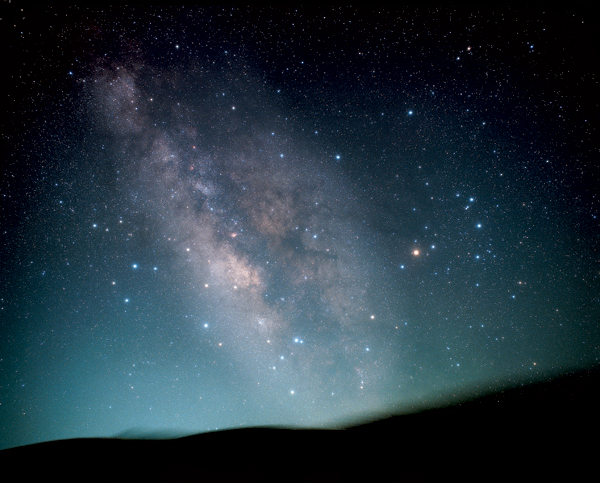










Comments
OsirisRa
December 25, 2017 at 2:15 pm
Great article. Complete amateur here. What telescope would you recommend? Thank you for your time.
You must be logged in to post a comment.
Anthony Barreiro
December 21, 2021 at 5:45 pm
If you don't already have a good pair of binoculars, I would start there. Magnification between 7 and 10 times, front lenses between 35 and 50 millimeters. Popular sizes are 7x35, 8x42, and 10x50. Higher magnification will show more detail. Lower magnification gives a wider field of view. Bigger lenses make things look brighter. Smaller lenses decrease the weight of the binoculars and make them easier to hold steady.
Also get a planisphere for your latitude -- a rotating diagram of the sky that you can set for any hour and any date -- and a good sky atlas. The Sky and Telescope Pocket Sky Atlas is very popular with beginners and experienced observers.
The S&T website has a wealth of articles on picking out equipment:
https://skyandtelescope.org/astronomy-equipment/choosing-astronomy-equipment/
And of course keep reading Sky & Telescope so you'll know what to look for!
You must be logged in to post a comment.
Ron Kramer
June 8, 2022 at 11:35 am
I like to shoot the double "Polaris" north star and its close companion. Since we typically do polar alignment at this star it's always THERE. I grab a couple of quick exposures to see how well I can resolve the two. On poor nights they become one. On good clear nights, I get two very distinct stars that appear super close to each other.
I test shot photo below.
https://scontent-ort2-1.xx.fbcdn.net/v/t1.6435-9/91057030_3343883175623441_2076188805794103296_n.jpg?_nc_cat=100&ccb=1-7&_nc_sid=730e14&_nc_ohc=gHjeBSkdt5IAX__3lrJ&_nc_ht=scontent-ort2-1.xx&oh=00_AT8pD9U7oyGzGvPjUxC-mqyXBiDmgTftNWUwR1PuOTlamQ&oe=62C6E772
You must be logged in to post a comment.
You must be logged in to post a comment.